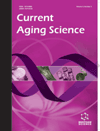-
s A Systematic Review of Studies of the STOPP/START 2015 and American Geriatric Society Beers 2015 Criteria in Patients ≥ 65 Years
- Source: Current Aging Science, Volume 12, Issue 2, Oct 2019, p. 121 - 154
-
- 01 Oct 2019
Abstract
Background: Polypharmacy remains problematic for individuals ≥65. Objective: To summarise the percentages of patients meeting 2015 STOPP criteria for Potentially Inappropriate Prescriptions (PIPs), 2015 Beers criteria for Potentially Inappropriate Medications (PIMs), and START criteria Potential Prescribing Omissions (PPOs). Methods: Searches conducted on 2 January 2019 in Medline, Embase, and PubMed identified 562 studies and 62 studies were retained for review. Data were abstracted independently. Results: 62 studies (n=1,854,698) included two RCTs and 60 non-randomised studies. For thirty STOPP/START studies (n=1,245,974) average percentages for ≥1 PIP weighted by study size were 42.8% for 1,242,010 community patients and 51.8% for 3,964 hospitalised patients. For nineteen Beers studies (n = 595,811) the average percentages for ≥1 PIM were 58% for 593,389 community patients and 55.5% for 2,422 hospitalised patients. For thirteen studies (n=12,913) assessing both STOPP/START and Beers criteria the average percentages for ≥1 STOPP PIP were 33.9% and Beers PIMs 46.8% for 8,238 community patients, and for ≥ 1 STOPP PIP were 42.4% and for ≥1 Beers PIM 60.5% for 4,675 hospitalised patients. Only ten studies assessed changes over time and eight found positive changes. Conclusion: PIP/PIM/PPO rates are high in community and hospitalised patients in many countries. RCTs are needed for interventions to: reduce new/existing PIPs/PIMs/PPO prescriptions, reduce prescriptions causing adverse effects, and enable regulatory authorities to monitor and reduce inappropriate prescriptions in real time. Substantial differences between Beers and STOPP/START assessments need to be investigated whether they are due to the criteria, differential medication availability between countries, or data availability to assess the criteria.


